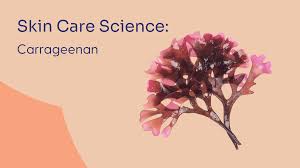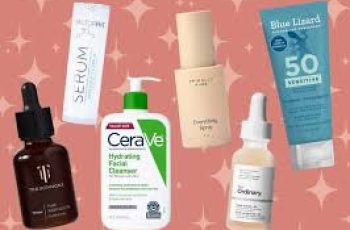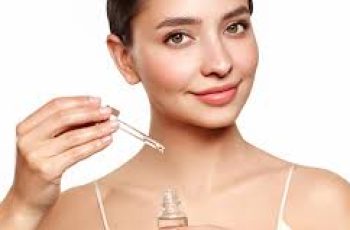
Carrageenan in Skin Care: What It Is & How It Works
When scanning ingredient labels on your skincare products, you might have noticed carrageenan. It’s often listed in moisturizers, cleansers, gels, and even toothpaste.
But what is carrageenan, and is it safe for your skin?
Derived from red seaweed, this ingredient plays a key role in how your skincare products look, feel, and perform. Some praise its hydrating abilities, while others worry about potential irritation.
This guide will break it all down so you can decide if carrageenan belongs in your skincare routine.
What Is Carrageenan?
Carrageenan is a polysaccharide extracted from a red seaweed known as Chondrus crispus, or Irish moss. It has been used for centuries in traditional medicine and as a thickener in food.
Today, carrageenan is found in a wide variety of products — from yogurt and plant-based milk to facial cleansers and lotions.
In skincare, it’s valued for its ability to create smooth, stable, and spreadable formulas.
It’s important to note that cosmetic-grade carrageenan differs from food-grade carrageenan. While both come from the same seaweed, their processing and purposes vary.
Cosmetic-grade carrageenan is used topically. Food-grade carrageenan is ingested — and comes with its own controversy.
What Does Carrageenan Do in Skin Care Products?
Carrageenan is used to improve the texture, stability, and moisturizing power of skincare products. It’s commonly found in:
Moisturizers, Serums, Face masks, Shaving gels, Toothpaste, Shampoo and conditioner
Its main purpose is to bind water and form a gel, helping products feel smooth and luxurious when applied.
Key Compounds in Carrageenan
Carrageenan’s power lies in several naturally occurring compounds:
1. Sulfated Polysaccharides
These sugar-based molecules have sulfate groups that allow them to bind water effectively and form gels.
This is what gives products their creamy, jelly-like texture and hydrating qualities.
2. Galactose Residues
Galactose is a type of sugar that attracts and retains moisture, enhancing carrageenan’s ability to hydrate the skin.
This makes it ideal for products aimed at softening and plumping the skin.
3. 3,6-Anhydro-D-Galactose
This compound boosts carrageenan’s gel-forming ability, making it useful for stabilizing emulsions and improving product consistency.
The Skin Benefits of Carrageenan
Let’s take a closer look at how carrageenan helps your skin:
1. Hydration
Carrageenan is a humectant, which means it attracts water. This helps skin stay hydrated, soft, and plump.
It’s especially useful in products for dry or dehydrated skin types.
2. Improved Texture and Spreadability
Carrageenan gives skincare products a silky, glide-on feel, making them easier to apply and distribute evenly.
This creates a better user experience and enhances product performance.
3. Stabilization of Formulas
It helps prevent ingredients from separating, keeping creams and gels smooth and uniform over time.
Carrageenan acts as a natural emulsifier, making it essential for stable skincare formulas.
Potential Drawbacks of Carrageenan in Skincare
Despite its many benefits, carrageenan isn’t ideal for everyone. Here’s what to watch out for:
1. Comedogenic Risk
Carrageenan is considered comedogenic by some sources, meaning it may clog pores and contribute to breakouts — especially in oily or acne-prone skin.
If you notice blemishes after using a product with carrageenan, it may be the cause.
2. Allergic Reactions or Sensitivity
Some individuals may experience redness, rashes, or itching when using products containing carrageenan.
This is more likely if you have sensitive skin or a known seaweed allergy.
Always do a patch test when trying a new product, especially if you have reactive skin.
Carrageenan vs. Carrageenan in Food: What’s the Difference?
There’s a growing concern around carrageenan in food. Studies have linked food-grade carrageenan to gut inflammation, bloating, and digestive issues.
Some research suggests it may degrade into a substance called poligeenan, which has been associated with gastrointestinal damage and colon cancer in animal studies.
Because of this, many people choose to avoid it in food — especially if they have IBS or other digestive disorders.
However, when it comes to skincare, topical carrageenan does not carry the same risks. It is not ingested and does not interact with your digestive system.
The FDA still considers carrageenan “generally recognized as safe (GRAS)” in both food and cosmetics.
Who Should Avoid Carrageenan?
While carrageenan is generally safe, certain individuals may want to avoid it:
Those with acne-prone or oily skin, as it may clog pores.
Anyone with a known sensitivity to seaweed or algae-derived ingredients.
People who have reacted negatively to skincare products containing emulsifiers or thickeners in the past.
If you’re unsure, do a patch test behind your ear or on your wrist before applying any new product to your face.
Common Skin Care Products That Contain Carrageenan
You’ll find carrageenan in many different types of cosmetic products, including:
Hydrating serums, Face creams and moisturizers, Gel-based cleansers, Toothpaste, Shampoos and conditioners, Aftershave and post-shave gels
Look on the ingredient list for names like “carrageenan,” “Chondrus crispus extract,” or “Irish moss extract.”
How to Use Products with Carrageenan Safely
Here are some simple tips to make the most of carrageenan in your skincare:
Know your skin type. If you’re acne-prone, look for non-comedogenic alternatives.
Always patch test. This helps avoid unexpected irritation or allergic reactions.
Read the ingredient list. If carrageenan is listed near the top, the concentration is higher.
Layer with hydrating ingredients. Carrageenan works well with hyaluronic acid, glycerin, and ceramides.
Avoid overuse. Use once or twice daily depending on your skin’s needs and tolerance.
Carrageenan vs. Other Texture Enhancers
Carrageenan isn’t the only texture and moisture-boosting ingredient in skincare. Other similar options include:
Xanthan gum – A common natural thickener and stabilizer.
Carbomer – A synthetic thickener often used in gels.
Squalane – A plant-derived moisturizer with a lightweight feel.
Glycerin – A humectant that draws moisture into the skin.
Some people may find these alternatives better suited for sensitive or acne-prone skin.
Final Thoughts: Is Carrageenan Good or Bad for Skin?
Carrageenan is a multifunctional ingredient that helps hydrate, stabilize, and improve the texture of your skincare products.
It’s especially helpful for dry and sensitive skin types looking for smoother, creamier textures.
However, it may not be suitable for everyone. If you’re prone to breakouts or have sensitive skin, proceed with caution.
There’s no strong evidence that topical carrageenan causes harm when used in skincare — but as with all ingredients, listen to your skin.
Quick Recap
Carrageenan comes from red seaweed and is used in skincare for hydration and texture.
It acts as a thickener, stabilizer, and emulsifier in many formulas.
It can hydrate the skin and make products feel luxurious.
Some users may experience clogged pores or irritation.
It’s different from food-grade carrageenan and does not pose digestive health risks when applied topically.
Your next step? Check your product labels and see where carrageenan shows up. If your skin loves it, great! If not, try switching to alternatives like squalane or glycerin.
For more ingredient breakdowns and expert skincare tips, follow us on Instagram and sign up for our newsletter!


